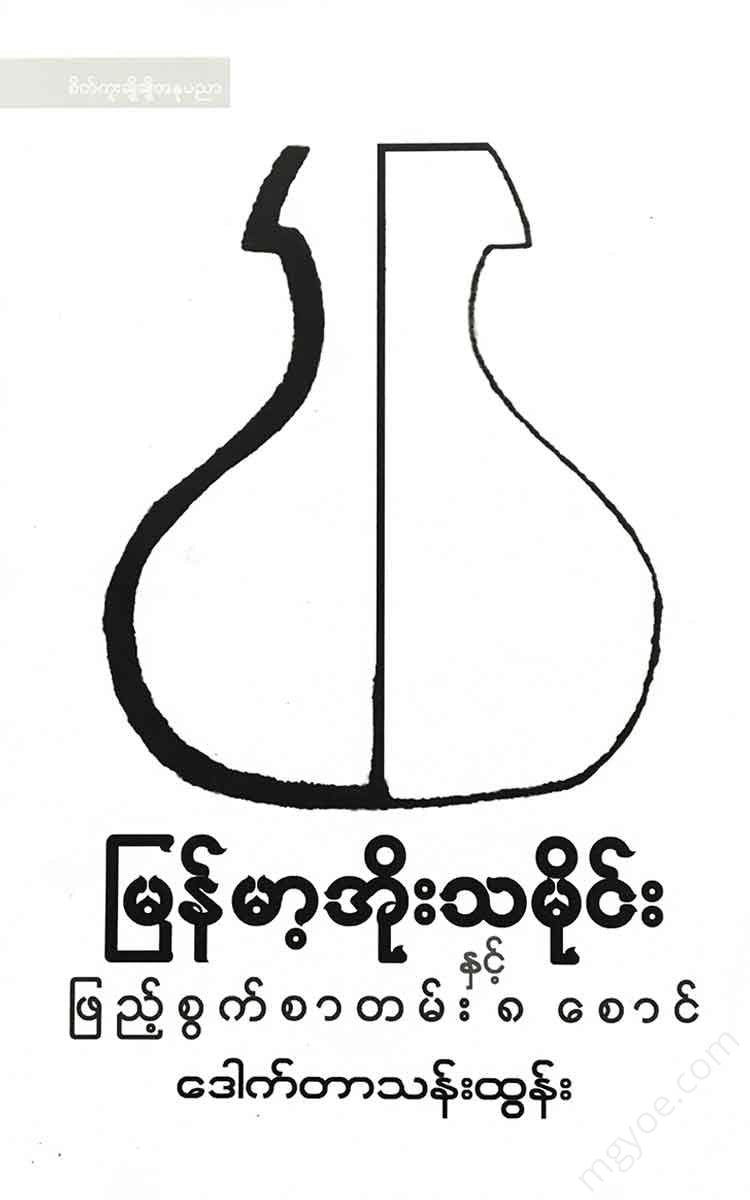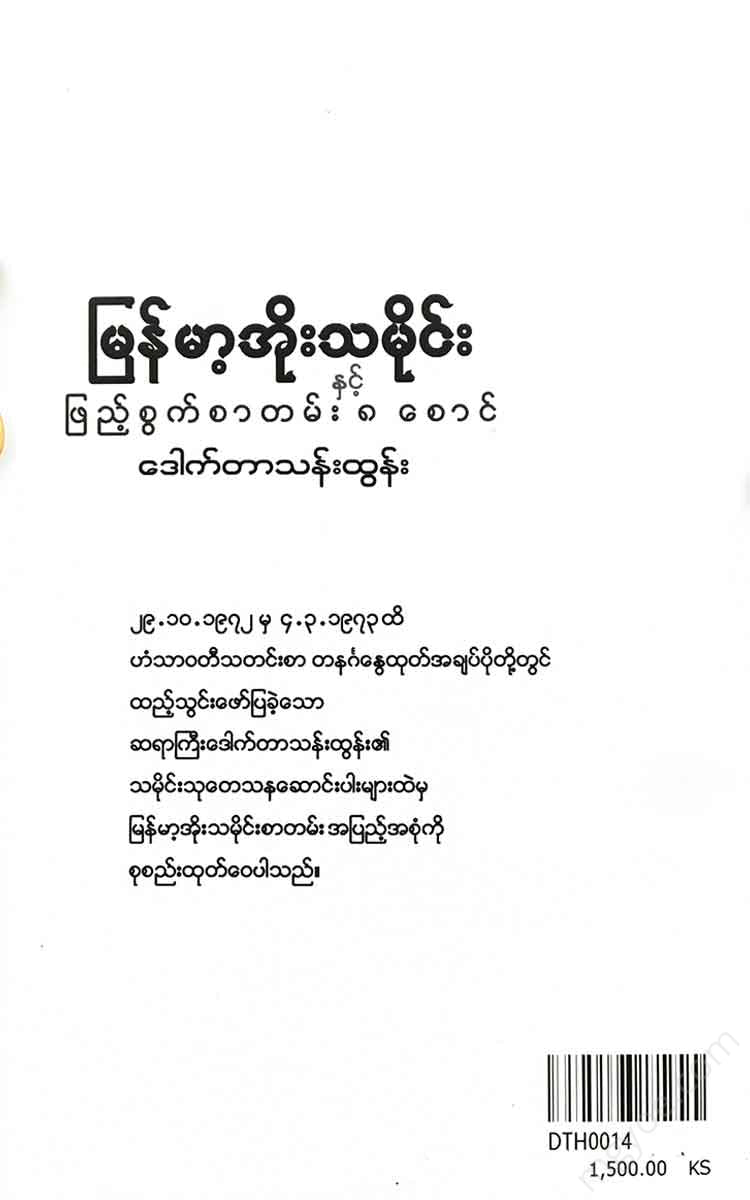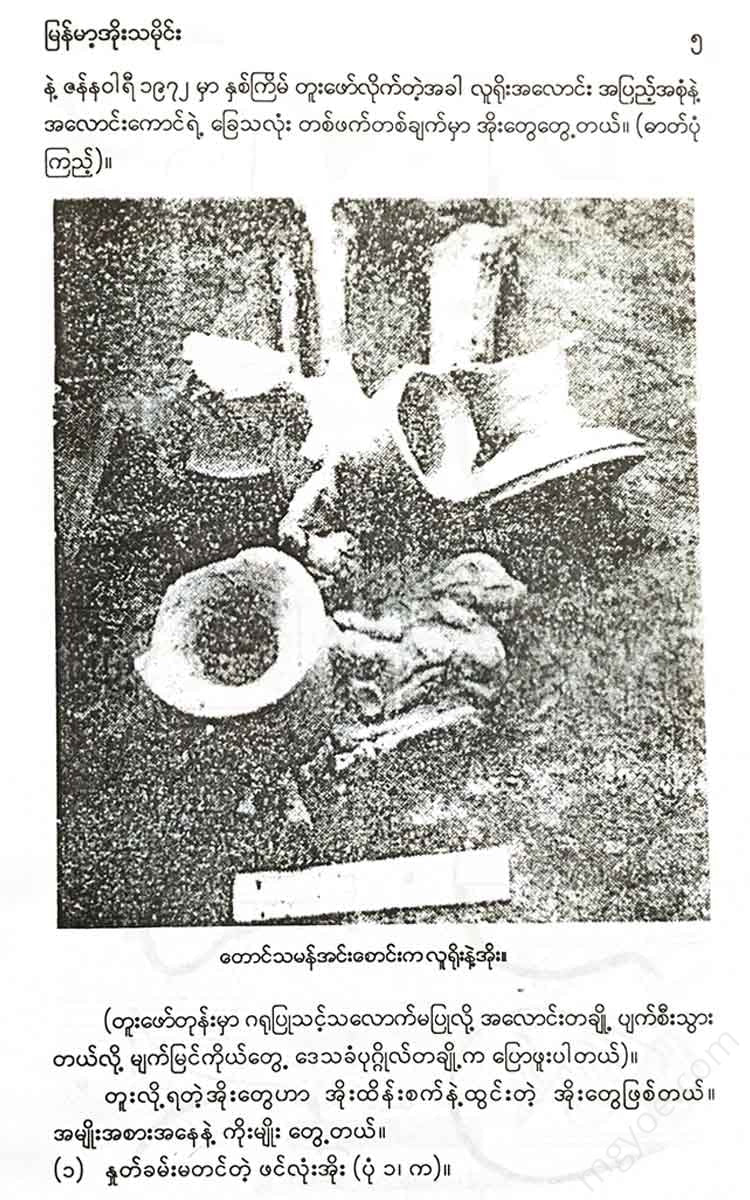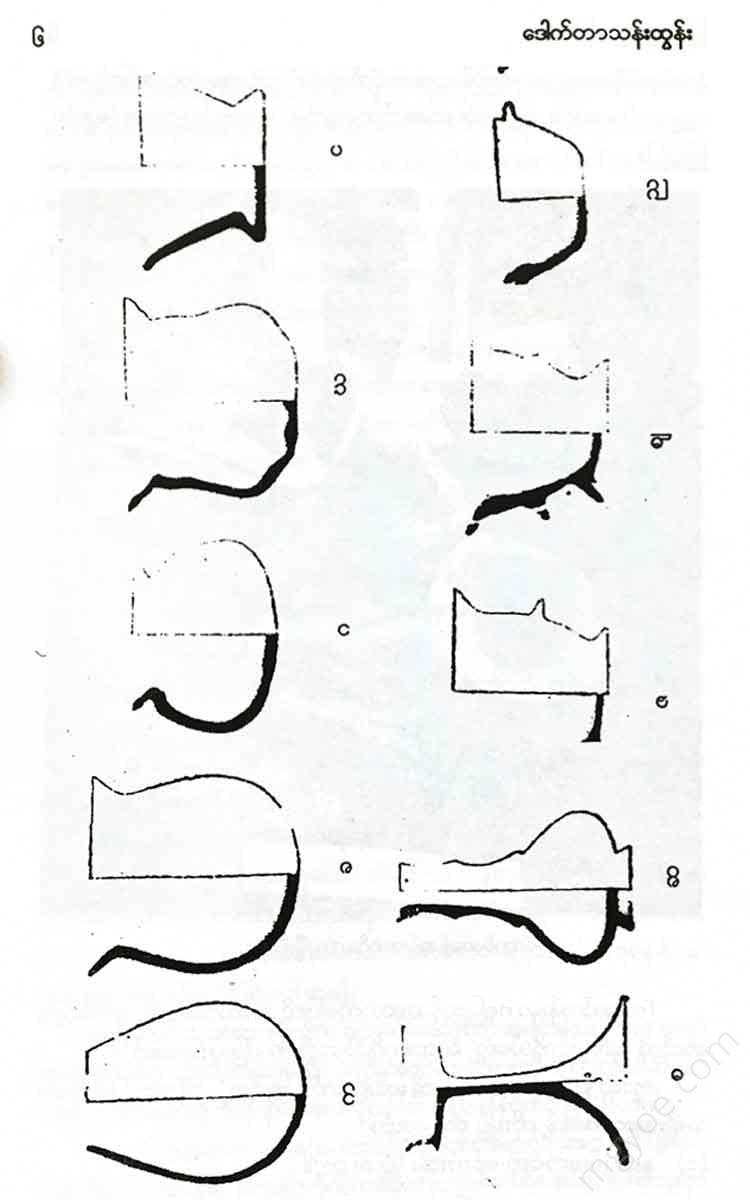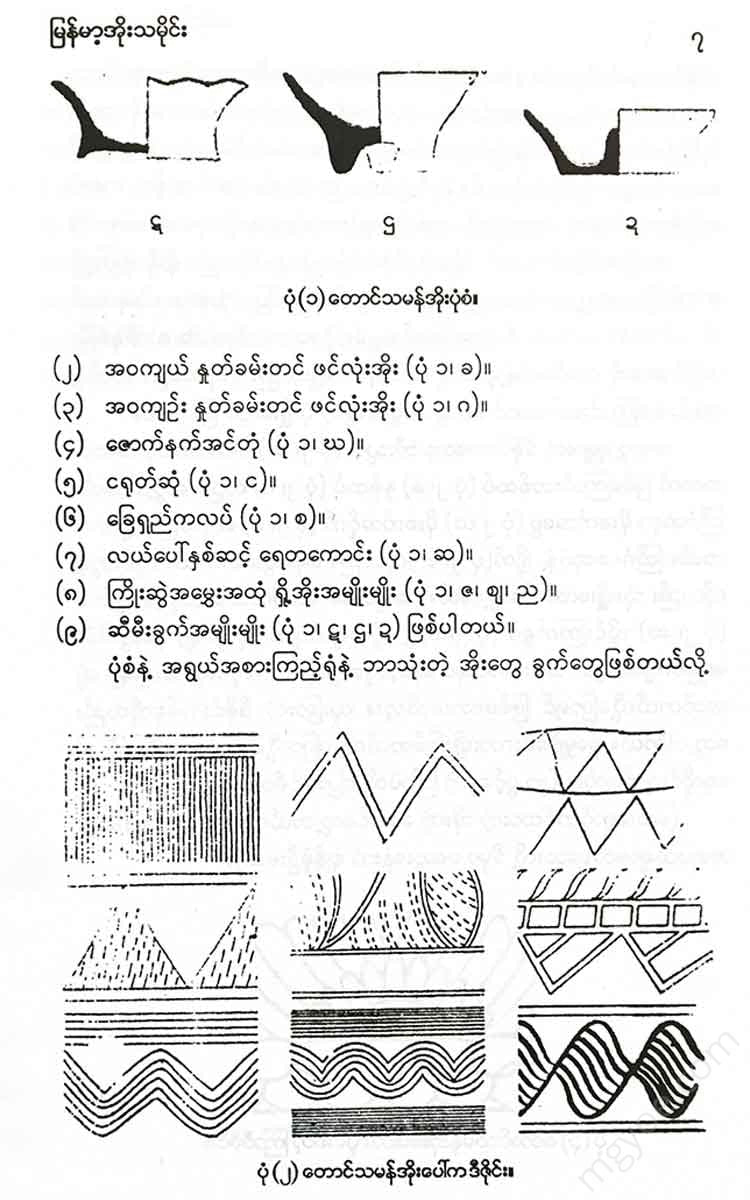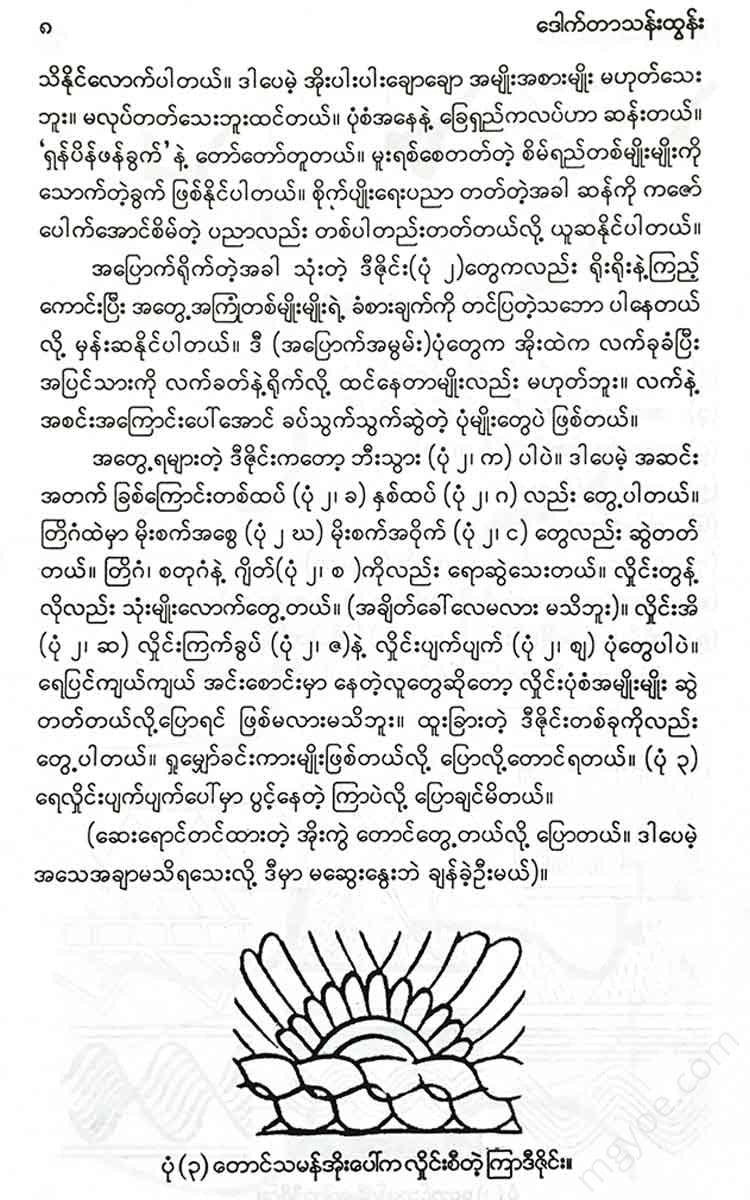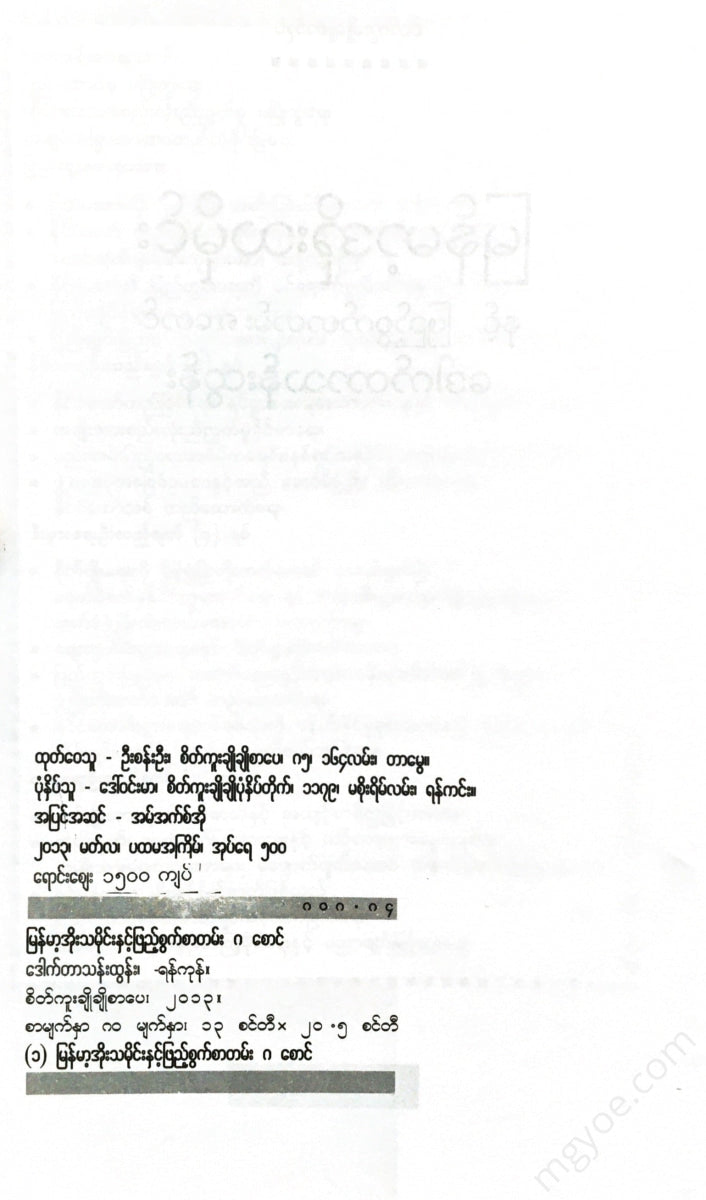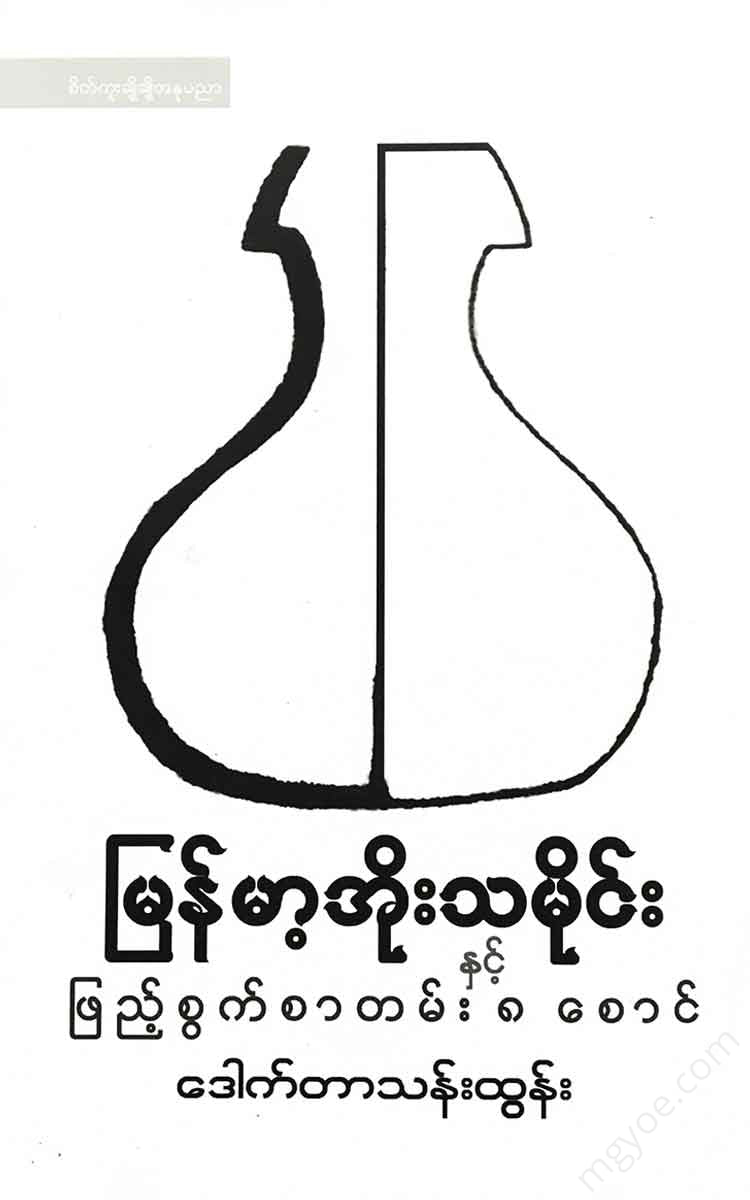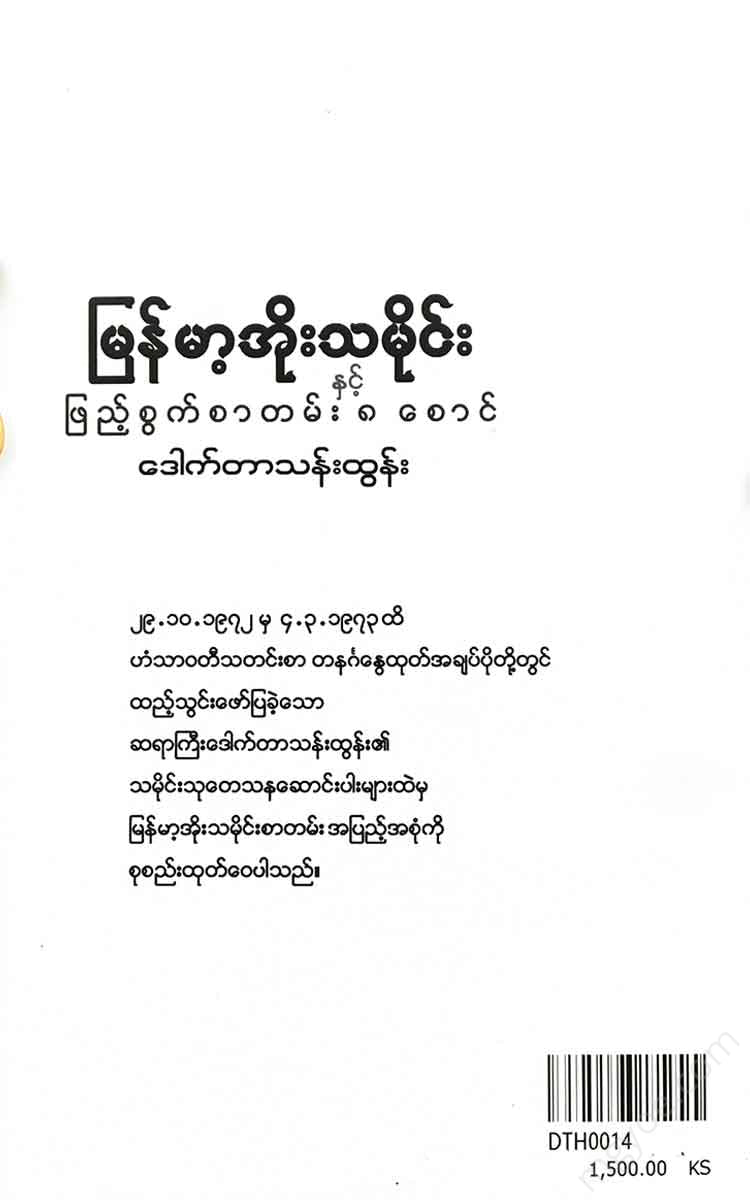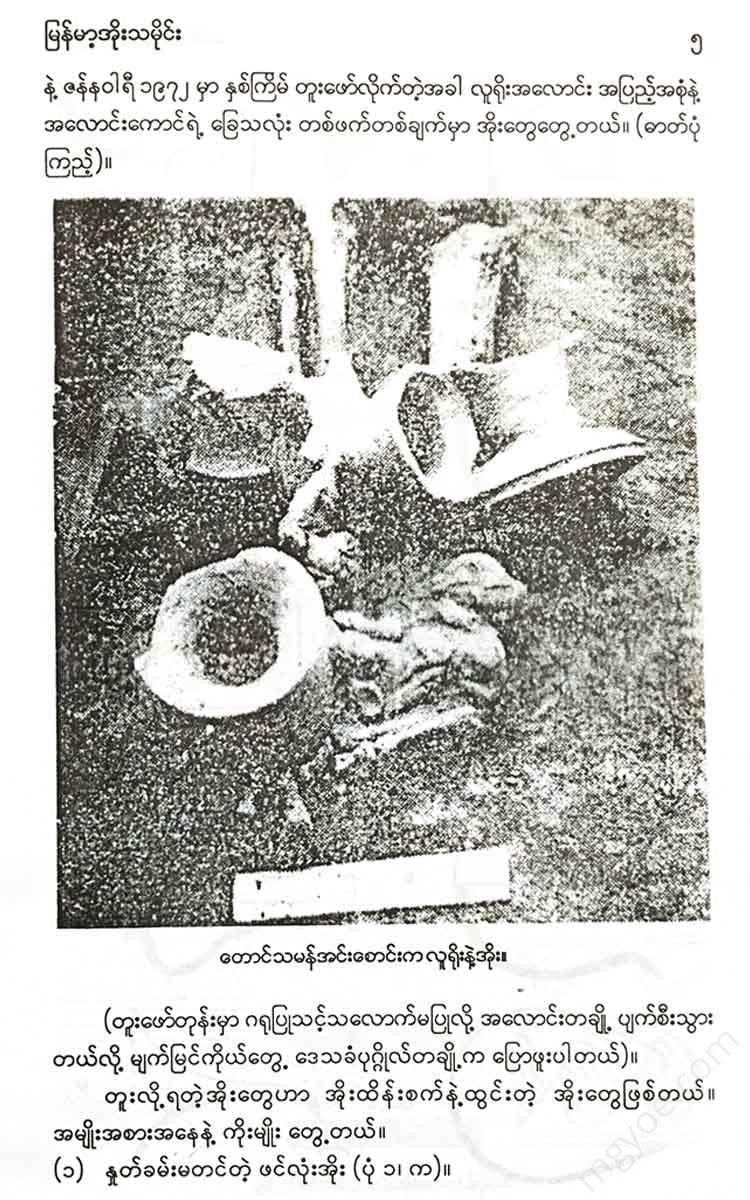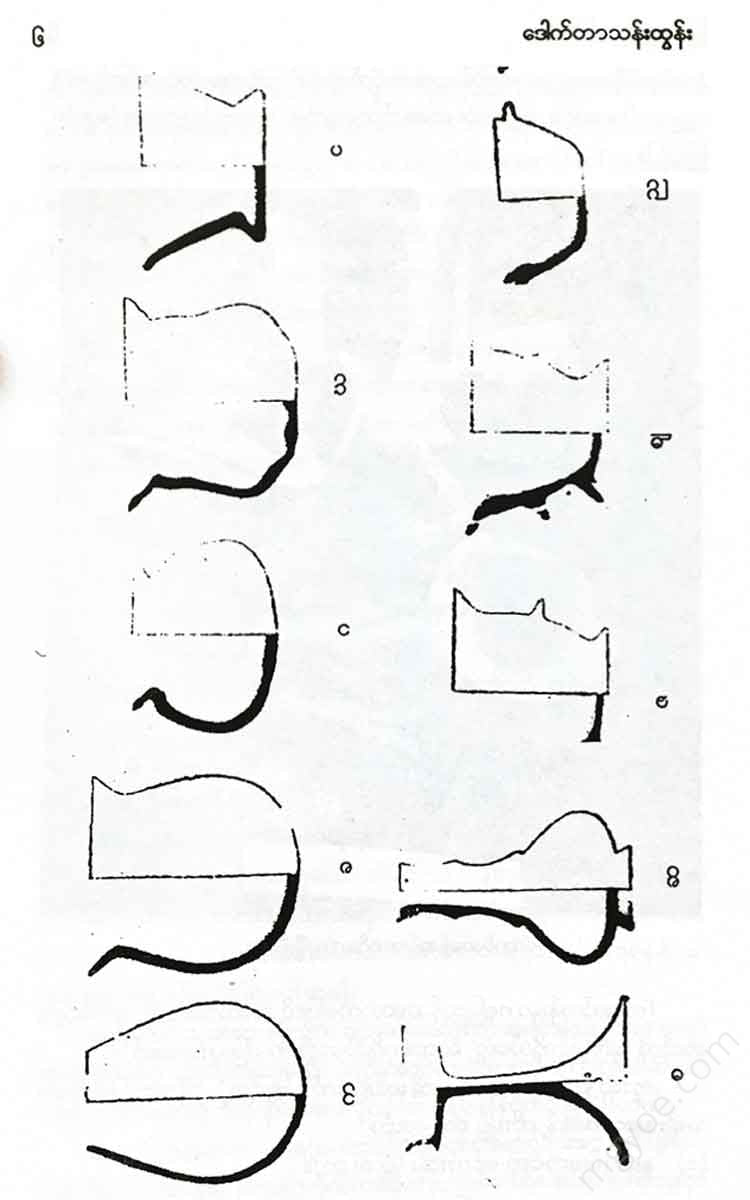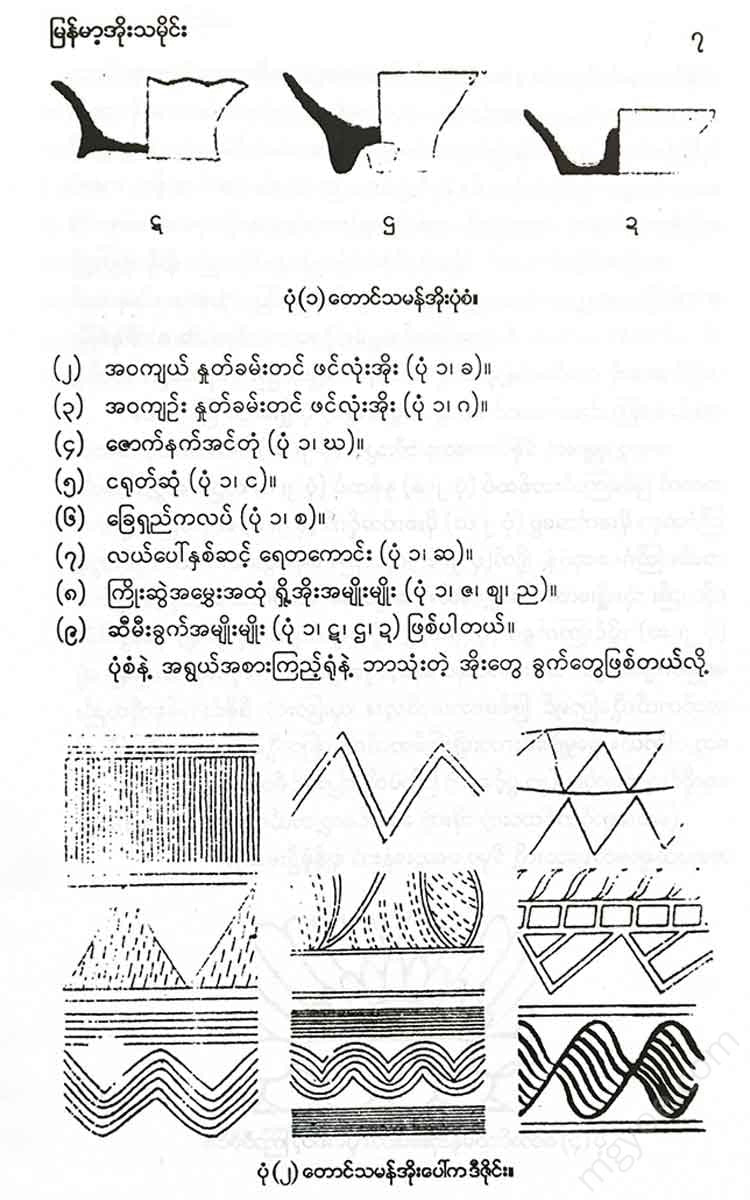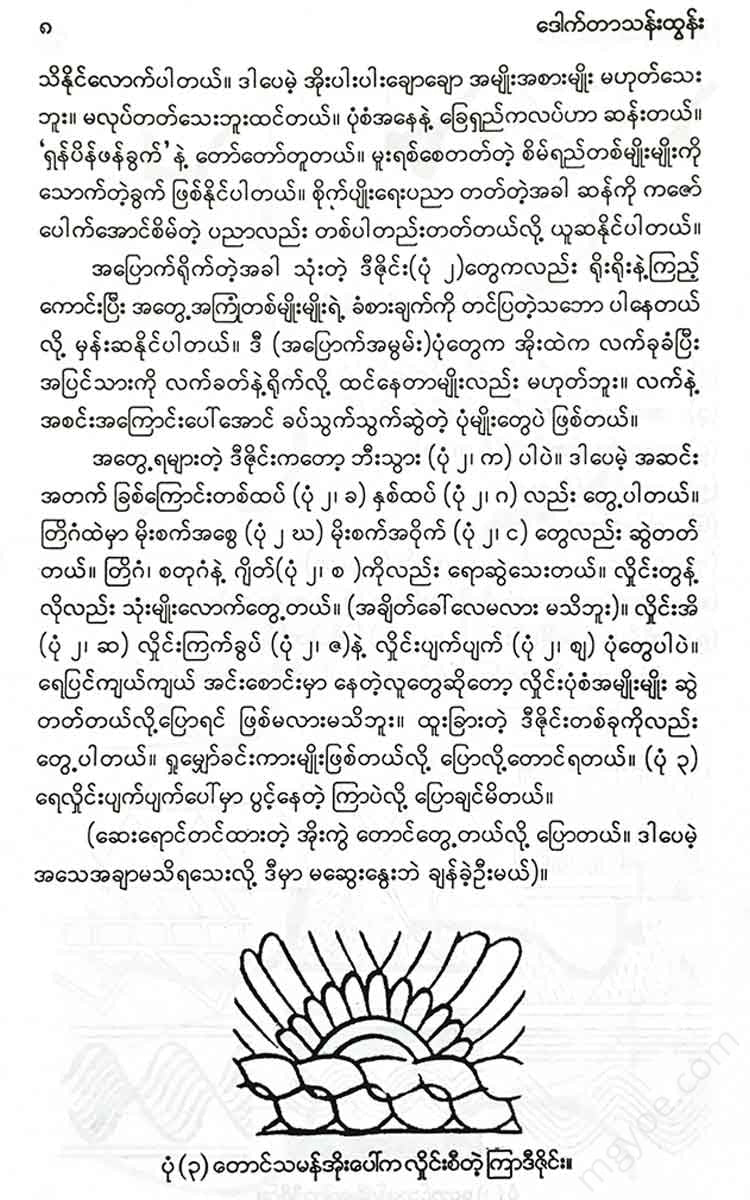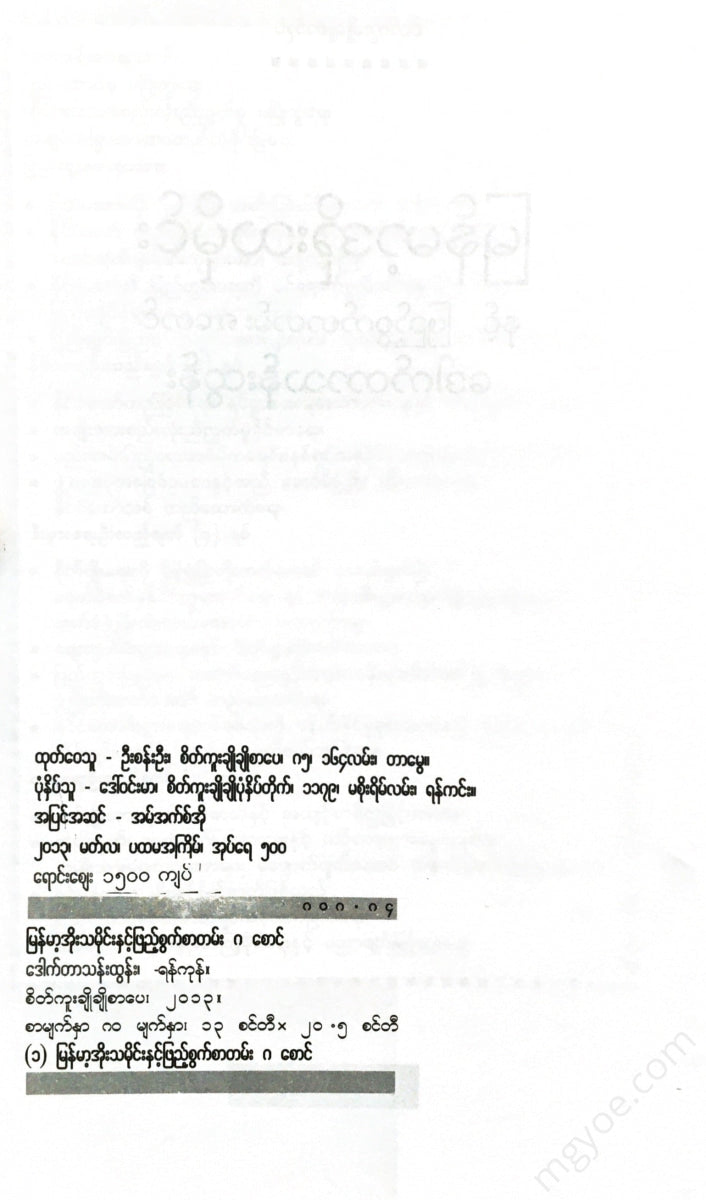စိတ်ကူးချိုချိုစာပေ
Dr. Than Tun - History of Burmese pottery
Dr. Than Tun - History of Burmese pottery
Couldn't load pickup availability
History of Burmese pottery (1)
(This paper was read at the Kanthasaeng Lei Anniversary Ceremony on 10 September 1972, chaired by U Wun). | A pot cannot be filled with water unless it is fired. The person who invented it to be filled with water is human. Therefore, it is necessary to study as much as possible the situation in Myanmar and Southeast Asia to find out when people first created pots.
Archaeological excavations in West Asia and neighboring countries have revealed when pottery was first used in their regions. It was previously thought that pottery appeared after the Neolithic period. Now, there are places where pottery was used even before the advent of agriculture. At Jericho, there were no pots at all in the early days of food production. The earliest use of pottery in those places is about 8800 BC. The pottery wheel is not earlier than 5250 BC. Glazed pottery does not appear until about 2900 BC. These dates are for West Asia. Recent excavations in Southeast Asia have shown a similar pattern.
The development of the stage of food foraging to the stage of food production in West Asia and Southeast Asia is not the same. Therefore, some scholars who study Southeast Asia alone believe that the terms Old Stone Age, Middle Stone Age, and New Stone Age should not be used to describe the development of West Asian society. They present a new picture of the development of Southeast Asia, adding new names at the same time. The period from ancient times to 42,000 years ago is called the Lithic Stone Age. At that time, only simple stone tools were made and used.
Next, the period from 42,000 to 22,000 years ago is called the Lignic Period. During this time, people used only wooden weapons. Among the wooden weapons, there were also many bamboo weapons.
Then, from 22,000 to 10,000 BC , we call the Crystallitic period. This is because people in Southeast Asia lost contact with each other and developed their own distinct cultures and traditions. During this period, starting around 22,000 BC, they began to choose and plant plants that would grow in their own places. They also domesticated animals that were easy to raise. In addition to wooden weapons, they also used moderately polished stone weapons. By 15,000 BC, pottery was being made and used. By 12,000 BC, agriculture was widespread.
After the sub-regional period, the Extensional period began. From 10,000 to 2000 years ago, people were able to come out of their caves. The harsh climates that had been there before gradually became more moderate and became the climate of today. Therefore, there was no need for caves anymore.
Although the art of making pots dates back to 15,000 years ago, the art of making pots with flowers dates back to 9,000 years ago. The reason it took so long to advance from one level to the next is because places like Myanmar did not have pots. The forests of Myanmar are rich in bamboo. Bamboo poles are also easy to use. Bamboo poles and bamboo baskets were used for both carrying water and storing water. That is why, even before the cultivation of rice began about 8,000 years ago, if you want to cook rice, you can think of bamboo poles. Even today, when cooking sticky rice, bamboo poles are still used. Copper pots were first used about 7,600 years ago. However, because this metal was not widely available, copper pots could not be widely used everywhere. Clay pots continued to be used until the emergence of rice cookers.
In all of Southeast Asia, during the period of expansion that we are talking about, there were no very large cities. There were no very powerful emperors. There were no large and strong fortresses anywhere from 4,000 to 3,000 years ago. Therefore, there were no major wars in Southeast Asia at that time.
At the beginning of the Christian era, the period of Conflicting Empires emerged. Politically, India, China, and some European countries invaded Southeast Asia. Their customs also invaded. Therefore, this period is called the Conflicting Empires. At that time, the art of pottery glazing, as a foreign art, appeared in Myanmar. In fact, it was not until the 11th century AD that pottery was widely used in Myanmar. A word of caution must be said here. The above-mentioned era divisions and the dates of the beginning of the art are only provisional decisions.
If we think about why pots were used, we can guess when they were first used. First, when the production of goods increased due to the good tools and equipment, there was a need to store them. Due to the system of exploitation of people, there were people who had an abundance of goods. That person tried to store them. The second thing to consider is that people have come down from the caves in the mountains to the plains because the weather is not so bad. When they were in the mountains, bamboo poles were the best for carrying water, but since they were built on the riverbanks, they were easy to break, but they wanted to use clay pots. Third, it is said that since it was early on, they found very beautiful pots, so it can be said that the profession of potter was already there. It can be said that there were people who specialized in making pots. Finally, I would like to point out that these potters lived in river basins where there was good clay. Villages were built on the riverbanks. This is estimated to be 9,000 years ago.
You can't just dry the pot in the sun and add water. You can add water when you bake it at 500 degrees Celsius. But even if you heat it to 1150 degrees Celsius, it will still leak a little. Only after glazing can you get a good amount of water. In West Asia, glazing has been practiced for 2900 years.
People don't glaze drinking water pots. If the drinking water pot is wet outside and drops of water fall down, they are very happy. I think the water is cooler. I also fill it up once a day and use it, so it doesn't matter if it leaks. If you store oil or pickle vegetables, you can't tolerate this kind of leakage. You have to use only glazed pots. Therefore, it is important to know when the art of glazing began in Myanmar. This art was practiced very late. As mentioned earlier, the art of glazing appeared in the 11th century AD. The archaeological research department has been able to dig up pots from more than 2,000 years ago. This age can be estimated by finding them together with polished stone tools.
The excavation site is around the Taungthaman Inhar, the Eighteenth Monastery and the Mahagandharon Monastery in Amarapura. February 1971 The shape of the pot is also beautiful. The design is also advanced. So it can be assumed that the culture of the Taungthaman people was also high. To say exactly when and when these people flourished, we must wait for the answer of the carbon (14) date. But what can be a clue is that some of these pots found in the tombs also have iron blades. The Pishano burial pot also has iron blades. If the Pishano is considered to be from the 1st to 5th centuries AD, the Taungthaman is a little earlier. I think it should be 1st century BC (before Christ).
